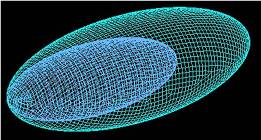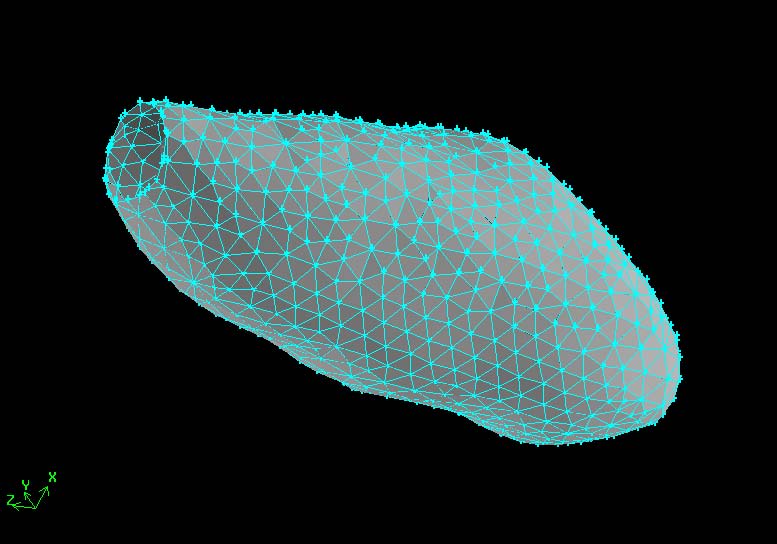

Anatomy of human gallbladder (GB) (left), An ellipsoid GB model before and after emptying (middle), and a patient-specific model from MRI (right)
Gallstones and other biliary
diseases affect about 10% of the adult population of the UK. Up to 60,000
operations to remove the gallbladder are being performed in the UK each year,
at a cost of about £40 million to the NHS. Understanding of the pathogenesis of
gallstone disease and pain production mechanism is poorly understood, and
complications of gallstones i.e. acute pancreatitis and obstructive jaundice
may be fatal.
The biliary system consists of pliable tubes and
various valves into which bile and pancreatic juices are secreted under
pressure. The gallbladder receives dilute bile from the liver, stores and
concentrates it during the inter-digestive period and evacuates the more viscous
gallbladder bile in response to a meal-stimulated contraction. The
bi-directional flow is controlled by the cystic duct, commonly known the
Heister valve or the spiral valve. Extensive clinical and in vitro studies at
the Sheffield Gallstone Centre have strongly suggested that the critical unknown in the normal and pathophysiology
of the biliary system is in the filling and evacuation of the gallbladder and
the flow through the cystic duct.
The most common cause of gallbladder disease is the presence of gallstones. However, it is common to have stones in the gallbladder that cause no symptoms. On the other hand, a proportion of people do suffer from severe acalculous (i.e. without gallstones) biliary pain. The decision to surgically remove the gallbladder is made when patients have symptoms (pain), not if they have gallstones.
Of a major concern is that not all patients benefit from the cholestectomy, and the symptoms continue even though the gallbladder has been removed. The fundamental issue is to understand the underlying mechanisms of gallbladder pain, which remains a challenge. This project aims to develop mechanical models, and to identify the mechanisms of gallbladder. Initial investigations predicted that the peak total stress in the gallbladder wall has a strong correlation with the pain.
This work is in collaboration with
Move up to Prof. X. Y. Luo